
Have you ever been on vacation in a foreign country and wanted to try out the local food? If so, you know how hard it is to know exactly what to order. But you can rest assured that you won’t face this problem in Hungary after reading our Hungarian food guide!
In this article, we’ll introduce you to a variety of Hungarian cuisine staples so you can get an idea of what to expect. We’ll also provide you with some easy Hungarian recipes that you can try to make at home. All you need is an open heart, the desire to discover, and a piece of paper to take notes and write down the names of the Hungarian food dishes that make you drool.
But before we begin…
 Table of Contents
Table of Contents
- What is Hungarian Food?
- Must-Try Dishes in Hungarian Restaurants
- Authentic Hungarian Food vs. Overseas Hungarian Food
- Unique Hungarian Foods and Drinks
- Food-Related Vocabulary
- Bonus: Simple Recipes to Make Authentic Hungarian Food at Home
- How HungarianPod101.com Makes Studying Fun
1. What is Hungarian Food?
Hungarian food refers to the traditional dishes that Hungarian people eat.
Hungarians love their stomach and that’s why our dishes are rich in fat, meat, and bread. (Hungarians could even eat bread with pasta!)
We also like our food spicy, and paprika is the heart of Hungarian cuisine. Other ingredients that often star in our meals include:
- dairy products, such as tejföl (“sour cream”), túró (“cottage cheese”), and other cheeses
- meat (mostly pork and chicken)
- all kinds of seasonal vegetables that can be grown in Hungary
Before continuing, you may find it useful to go over our food-themed vocabulary lists:
Now, are you ready for this greasy, juicy culinary experience? Let’s go then.
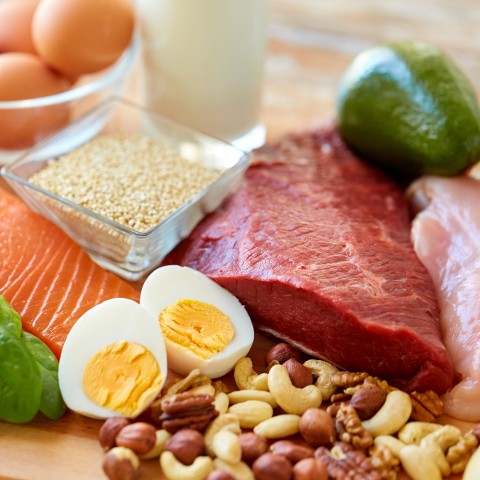
2. Must-Try Dishes in Hungarian Restaurants
In this section, we’ll introduce you to the five most popular Hungarian foods. First, it’s important to note that the majority of traditional dishes in Hungary are actually Hungarian peasant food.
Now, let’s see what they are.
Gulyás(leves)
Main ingredients:
- beef
- yellow onion
- garlic
- pork fat
- Hungarian red paprika & green paprika
- red wine
- tomato, potato, carrot, root and leaf parsley, celeriac
This one is the traditional Hungarian food, without a doubt. If you were to ask someone to name a Hungarian specialty, gulyás (goulash) would certainly be their first answer. Here’s a fun fact for you: gulyás actually means “herdsman.”
To make this famous dish like a true Hungarian would, cook it over an open fire. And if you want to eat it like Hungarians do, don’t forget the bread!
(Csirke)pörkölt
Main ingredients:
- chicken thighs
- yellow onion
- pork fat
- Hungarian red paprika (ground)
- tomato
- water
This traditional Hungarian food is similar to a stew. While chicken is a popular meat option in this meal, people can also make pörkölt with other types of meat such as pork. The important thing here is the Hungarian powdered red paprika.
Another traditional food called nokedli (a Hungarian noodle) is typically served with this meal.
Halászlé
Main ingredients:
- common carp, catfish
- yellow onion
- Hungarian red paprika (ground)
- water
Halászlé (“fisherman’s soup”) is a traditional Hungarian Christmas food, so it’s the perfect choice if you want to spice up your Christmas family dinner at home. The broth has a powdered paprika base, and the soup is made with thick chunks of fish. Hungarians usually eat this dish with bread.
If you feel courageous, you can find full Hungarian Christmas food recipes online to make. Don’t forget to let us know how they turned out.
Hortobágyi palacsinta
Main ingredients:
- pork thighs
- yellow onion
- Hungarian red paprika (ground), green paprika
- tomato
- parsley
- flour
- eggs
- cow’s milk
- tejföl
Hortobágyi palacsinta is a kind of salty pancake that got its name from the Hungarian region (and village) of Hortobágy. The pancake (which resembles the French type more than the American type) is filled with ground meat and a creamy (due to the tejföl) paprika sauce.
Rántott sajt
Main ingredients:
- Trappista cheese
- eggs
- flour
- bread crumbs
- oil
Last but not least, another typical and famous Hungarian food is breaded cheese. Hungarians like to, can, and will bread and then fry everything, including cheese. They usually put french fries or rice on the plate as a side dish, and they like to dip the cheese into tartar sauce (or cranberry sauce, if it’s Camembert cheese).
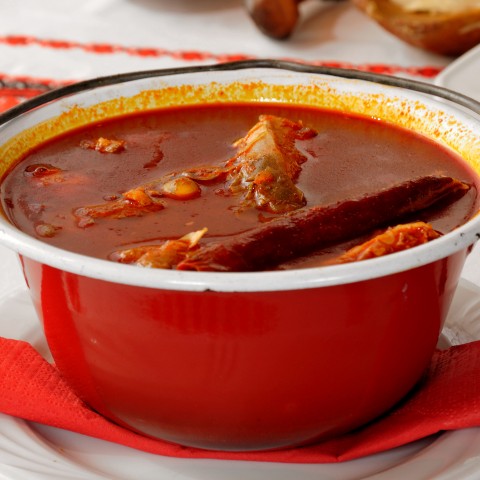
3. Authentic Hungarian Food vs. Overseas Hungarian Food
As Hungarian food casts its spell on the world, it’s becoming increasingly common to find Hungarian restaurants and food shops outside the borders of Hungary. However, overseas Hungarian food may not always offer the same level of flavor and authenticity as that made in-country.
As we stated earlier, one of the key ingredients of Hungarian cuisine is the seasonal vegetables grown in Hungary. Sometimes, Hungarian food store or restaurant owners don’t bother to (or simply can’t afford to) export vegetables from Hungary. Not to mention that shipping the products over long distances isn’t very environmentally friendly.
When in search of authentic Hungarian food, you must take into consideration who the owner of the restaurant or shop is. Some entrepreneurs see the potential of Hungarian food to reach across borders and cultures, and decide to open a restaurant or shop without deep knowledge of how the food is actually made. While they might find recipes online, they may still miss the essentials that only a true Hungarian could implement. This is why native Hungarians are most capable of running successful Hungarian restaurants and crafting high-quality Hungarian meals.
For example, there are overseas Hungarian food shops and restaurants in Austria, New York, Sydney, and London. However, the menu is often altered to appeal more to foreigners so that Hungarian food would seem more familiar to them. An example of this is lángos, a Hungarian dish of deep-fried dough topped with garlic, tejföl, and cheese. In Sydney, it’s sold as ‘garlic bread.’ But lángos is actually lightyears away from that!
We advise you to check the history and the owner of any overseas Hungarian food store or restaurant you’re visiting to decide whether the place is trustworthy. However, if you have the chance, you should definitely try authentic Hungarian food in its own kingdom.
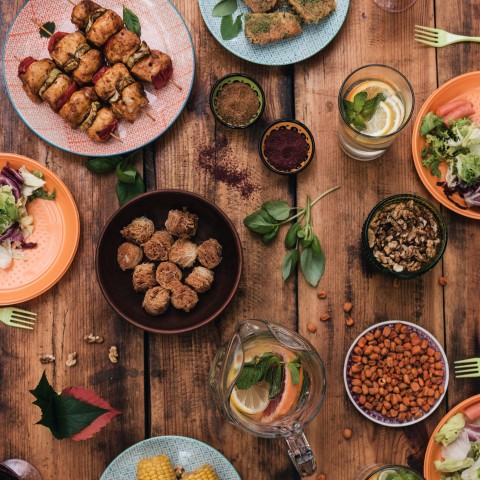
4. Unique Hungarian Foods and Drinks
Hungarian food often leaves foreigners thinking “Whaaat?” But you have only seen the tip of the iceberg.
Now we’re going to show you five truly unique Hungarian foods and drinks that you can only find in Hungary. Since we’ve been talking about main dishes so far, it’s time to introduce you to some Hungarian desserts and beverages.
- → If you want to dive further into this topic, make sure you look at our Culture Class lesson on Sweets and Desserts!
Somlói galuska
Ah… Somlói galuska, a dish that is dear to all Hungarians. And no wonder! It’s a delicious sponge cake with layers of chocolate cream and walnut kernel, spiced with rum and crowned with whipped cream. This Hungarian dessert usually has raisins in it, too.
Mákos guba
Many Hungarians associate mákos guba with their childhood. It’s kifli (a type of Hungarian bread) that’s soaked in a mixture of warm milk, vanilla, sugar, and poppy seeds. Note that poppy seeds are very common in Hungarian desserts.
Bejgli
Here is yet another Hungarian Christmas food. Bejgli is a pastry roll traditionally filled with poppy seeds or walnuts. Nowadays, you can find versions that are filled with chestnuts, sour cherries, or dried plums.
Pálinka
Pálinka is a traditional fruit brandy that all Hungarians are proud of. It can be fermented from almost any kind of fruit, but the most common ones are plum and apricot. It’s usually 37.5% – 86% ABV. Pretty strong, to say the least.
Tokaji aszú
Tokaji aszú is the most famous wine of Hungary. Aszú is a type of Tokaji wine that comes from Tokaj, Hungary. The berries of this sweet wine are picked individually. The final beverage is kept in wooden casks.
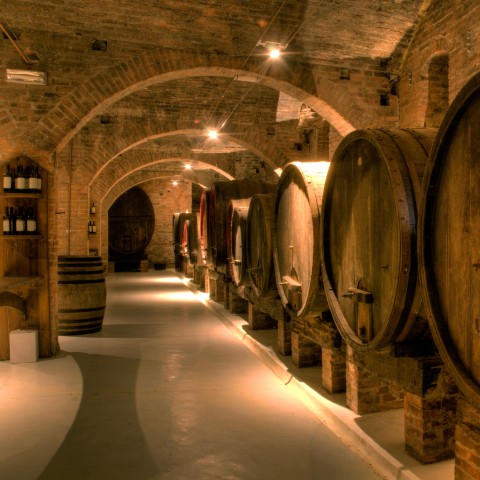
5. Food-Related Vocabulary
By now, we’re sure you’re excited to try some famous Hungarian cuisine yourself! Following is a list of words and phrases that might come in handy while you’re visiting a restaurant in Hungary.
If you want even more practical phrases, see our vocabulary lists of Useful Phrases for Ordering Food and Vocabulary and Phrases at the Restaurant.
Szeretnék egy üveg bort.
In English: I would like a bottle of wine.
- “I would like” – Szeretnék
- “a bottle of” – egy üveg
- “wine” – bor
Van tejtermék ebben az ételben?
In English: Is there any dairy (products) in this dish?
- “dairy product” – tejtermék
- “dish” – étel
Mi a mai ajánlat?
In English: What are today’s specials?
- “today’s special” – mai ajánlat
Please note that in Hungarian, you would ask this question in singular form rather than plural.
Beszélhetek a szakáccsal? Nagyon meg vagyok elégedve az étellel.
In English: Can I speak to the chef? I’m very satisfied with the food.
- “to speak” – beszélni
- “chef” – szakács
- “satisfied” – elégedett
- “food” – étel
Szeretnék fizetni a vacsoráért.
In English: I’d like to pay for the dinner.
- “to pay” – fizetni
- “dinner” – vacsora

6. Bonus: Simple Recipes to Make Authentic Hungarian Food at Home
Now that you’re familiar with some of the most popular Hungarian foods, we’ll teach you how to make Hungarian food at home. We’ve included three simple recipes that anyone can make, so be courageous in the kitchen and get ready for a delicious culinary journey.
Recipe #1: Mákos guba
Ingredients:
- 8 ps. kifli
- 1 l. cow’s milk
- 2 packs vanilla sugar
- 15 dkg poppy seed, ground
- 15 dkg powdered sugar
Method:
- Cut the kiflis into 1 cm-wide circles. Pour the mixture of warmed-up milk and vanilla sugar on them in a pot.
- Once the kifli circles soak up the milk, sprinkle them with the poppy seed and sugar mixture. Serve immediately.
Recipe #2: Babfőzelék
We haven’t yet discussed this type of Hungarian food, though it’s an important one. Főzelék can be described as a very, very thick soup—and Hungarians love it! They can turn almost any vegetable into one.
Ingredients:
- 30 dkg dry beans, soaked the night before
- 1-2 bay leaf
- 1 small yellow onion (chopped)
- 2 cloves garlic (crushed)
- 2 Tbsp flour
- 4 Tbsp oil
- 1 tsp powdered Hungarian red paprika
- 2 dl tejföl
- 1 tsp sugar
- 1 tsp vinegar, 10%
- salt
- pepper (ground)
Method:
- Cook beans over medium heat, for approx. 10-15 minutes, then drain. In the meantime, in another pot, boil water and pour it over the beans until they are just covered. This prevents it from puffing. Put the bay leaves and salt in it, and cook until tender.
- While the beans are cooking (over low heat), whisk together oil and flour, then add the chopped onion and garlic and sauté until glassy. Remove from fire and add paprika, tejföl, and 1 dl of cold water. Whisk until combined and without lumps. Add the mixture to the beans and bring to a boil while constantly stirring. When boiling, reduce the heat and leave it like that. If the főzelék seems to be too thick, add more water. In the meantime, add sugar, salt, pepper, and vinegar to suit your taste.
Recipe #3: Meggyleves
Ingredients:
- 50 dkg sour cherry
- 8 dl water
- sugar
- 5 ps. dried clove
- 1 p. cinnamon stick (2 cm)
- juice of 1/2 lemon and zest
- 5-6 lemongrass leaves
- 2 pack vanilla sugar
- pinch of salt
- 1/2 pack vanilla pudding powder
- 2 dl sour cream
Method:
- Put the pitted sour cherries in a pot and pour water on them. Sweeten with sugar and vanilla sugar to your liking. Zest a lemon into it, and put it in the pot with the lemongrass leaves and the rest of the spices. Bring to a boil and then cook for approx. 10 minutes on low heat.
- When it’s cooked, mush the sour cherries with a mixer. If you want, you can half-mush them so there are a few chunks still left. Then, put it back on the stove and bring to a boil again.
- Whisk the sour cream together with the vanilla pudding powder and, while constantly stirring, pour it into the soup.
- Cook for a few more minutes, until the soup is thick enough.
- This soup is usually served cold, so you might want to wait until it cools down or put it in the fridge for 30 minutes. Enjoy.
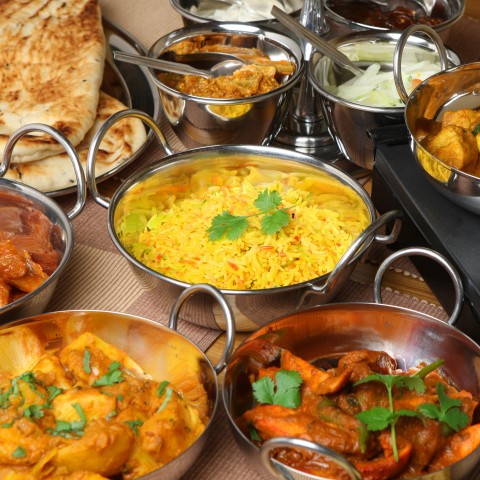
7. How HungarianPod101.com Makes Studying Fun
Today, you explored the most important traditional Hungarian foods, and you even learned how to make some of them at home!
We hope we brought you—or at least your stomach—closer to the Hungarian culture. It’s truly amazing to get to know a culture through its foods; cuisine plays just as large a role in a nation’s culture as things like habits and architecture do!
We recommend that you continue exploring this topic first-hand. Whether you visit Hungary to try some authentic dishes, dine at a nearby Hungarian restaurant, or try your hand at Hungarian cuisine in the kitchen, making this country’s cuisine a part of your life will greatly improve your language learning!
If you would like to learn more about the Hungarian language and culture in a fun and exciting way, join the HungarianPod101 family. Our lessons are designed to keep you engaged and entertained, while providing practical information and learning materials.
Before you go: Which of these Hungarian foods do you most want to try? How many of these dishes have you had already? We look forward to hearing from you!










